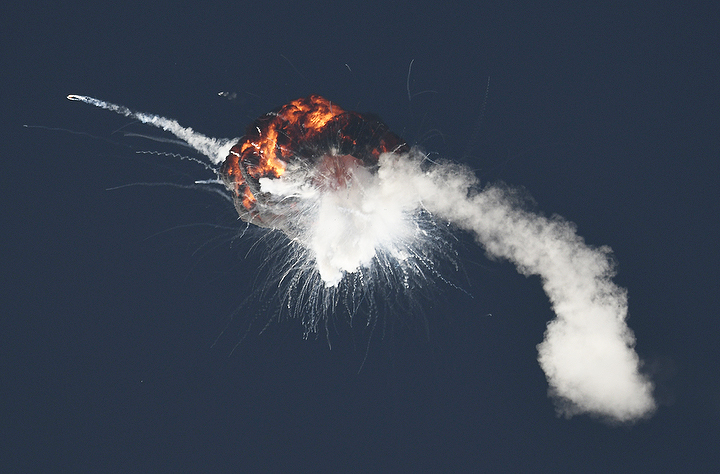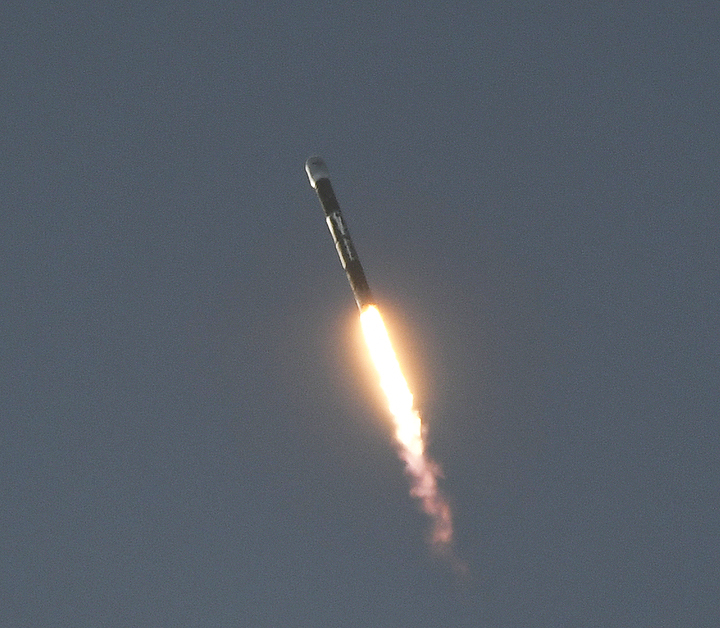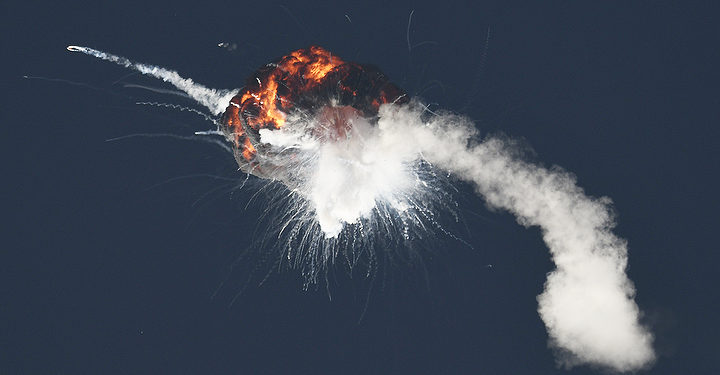
The first test flight of Firefly Aerospace’s privately-developed Alpha small satellite launcher ended in a fiery failure soon after liftoff Thursday from Vandenberg Space Force Base in California.
The rocket roared away from its pad at Space Launch Complex 2-West at 6:59 p.m. PDT (9:59 p.m. EDT; 0159 GMT) and all appeared to be going well as it climbed into a clear blue sky. The first sign of possible trouble came at about T+1 minute 47 seconds when a launch controller reported Alpha was not yet supersonic, a milestone it was supposed to have reached 40 seconds prior to that. At T+2 minutes 18 seconds the controller advised “vehicle is supersonic”. Shortly there after the rocket appeared to lose control and tumble for several seconds before exploding, approximately 2 minutes 29 seconds after launch.
Firefly Aerospace confirmed the mishap in a tweet: “Alpha experienced an anomaly during first stage ascent that resulted in the loss of the vehicle. As we gather more information, additional details will be provided.”

It was the inaugral flight for the two-stage Alpha rocket, which is designed to loft up to 2,200 pounds (1,000 kilograms) into a low-altitude orbit, or up to 1,388 pounds (630 kilograms) of payload to a 310-mile-high (500-kilometer) sun-synchronous polar orbit.
The kerosene-fueled rocket is one of many privately-developed small satellite launchers new to the market. It is powered by four Reaver engines on the first stage which generate more than 165,000 pounds of thrust at maximum power, and a Lightning engine on the second stage will produces more than 15,000 pounds of thrust.
Firefly says the size of its rocket — which can carry heavier payloads than Rocket Lab’s Electron or Virgin Orbit’s LauncherOne — differentiates it from other prospective launch providers in the smallsat launch market. It expects to sell a dedicated Alpha launch for $15 million per flight.
The fully-assembled Alpha launch vehicle stands around 97.6 feet (29.75 meters) tall and measures nearly 6 feet (1.8 meters) in diameter.
Firefly Aerospace, headquartered in Cedar Park, Texas, was previously named Firefly Space Systems before entering bankruptcy. The renamed company emerged from bankruptcy proceedings in 2017 under new ownership.
Noosphere Ventures, a Menlo Park, California-based firm led by managing partner Max Polyakov, now funds Firefly’s rocket development program.
Firefly’s other projects beyond the Alpha launcher include the Beta rocket, which will use upgraded engines to haul heavier payloads into orbit. Firefly also has ambitions for a robotic lunar lander, a space tug powered by electric thrusters, and a reusable spaceplane.
In addition to its pad at Vandenberg, Firefly is also developing a second launch site would be located at the disused Complex 20 launch pad at Cape Canaveral Space Force Station in Florida.
For this first test flight the rocket was carrying a suite of educational, artistic, and research payloads. The company offered free launch capacity through a program Firefly calls the Dedicated Research and Education Accelerator Mission, or DREAM.
The Alpha rocket was targeting a 186-mile-high inclined 137 degrees to the equator. The unusual orbit, called a retrograde orbit because the rocket will travel against the Earth’s rotation, required the Alpha launcher to head southwest over the Pacific Ocean on a track that would have taken it south of Hawaii.
